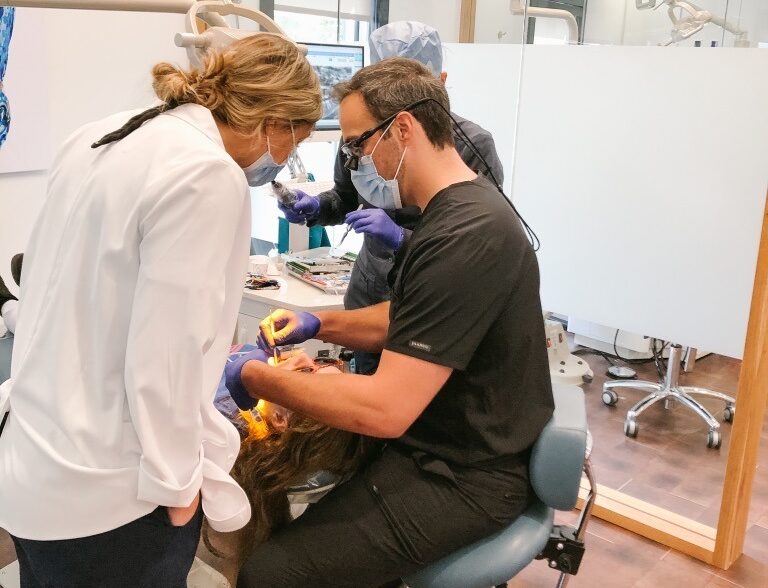Are you thinking about getting orthodontic braces or Invisalign clear aligners, but you feel nervous about all the potential things that could go wrong? It’s okay, we promise! Being anxious about the unknown is entirely normal, and we respect your desire to be prepared for any orthodontic emergencies that may pop up during your treatment. At Sturgill Orthodontics, we believe in hoping for the best and planning for the worst so that you can be comfortable and confident every step of the way. So, how do you handle orthodontic emergencies? Let’s find out!
What Qualifies As An Orthodontic Emergency?
When it comes to your braces or any orthodontic gear, it’s totally normal to hit a little bump now and then. But how do you tell a true orthodontic emergency from a minor hiccup? Let’s clear that up so you can save yourself a needless trip to the office and instead get the right help from your ortho pros at Sturgill Orthodontics.
First off, a real orthodontic emergency is pretty rare. We’re talking about severe situations like significant pain that doesn’t go away, an injury to the face or mouth that affects your orthodontic appliances, or something that’s causing trouble breathing or swallowing. These are the moments when you need to call us ASAP.
On the flip side, most issues are milder and manageable at home until you can swing by our office. Things like a loose bracket, a poking wire, or a lost aligner might be annoying, but they’re not going to warrant a dramatic, lights-flashing ride to the hospital.
Remember, if you’re ever in doubt about whether your situation is a true emergency, just give us a ring. Dr. Sturgill, Dr. Williams, and Dr. Harper are here to guide you through any ortho snags with a smile. So, hang tight; help is just a call or a visit away!
What Can You Do At Home If You Have A “Situation”?
Fortunately, those annoying inconveniences of broken or loose brackets and wires or damaged or lost aligners are pretty easy to deal with.
Loose or Broken Brackets
If you have a rogue bracket or band that comes loose but is still attached to the wire, leave it in place and cover it with orthodontic wax. The braces wax will hold it in place and keep you comfortable by preventing it from causing more irritation or damage. If it’s already completely unattached, store it in a safe place and bring it to your next appointment. Do NOT try to reattach your dislodged bracket.
Misplaced or Poking Wire
As your teeth move, the archwire may start poking out near the back of your mouth. For a quick fix, use the eraser end of a pencil to gently push the wire flat against the tooth. If the wire is too stubborn, place a bit of orthodontic wax over the end to shield your mouth from further irritation.
Lost or Damaged Invisalign Aligners
If you find yourself with a damaged or lost aligner, don’t panic. If a damaged aligner is still wearable and does not cause discomfort, continue to wear it until you can contact us for advice. If it’s lost or damaged to the point that it’s unwearable, revert to wearing your previous set of aligners, if available, to maintain your current teeth position. Contact us as soon as possible so we can discuss the best steps forward and possibly order a replacement aligner. Please do NOT move to the next aligner in the set without our approval! You might end up damaging the aligner by trying to force it on when it doesn’t fit, or you might hurt your progress by trying to “speed” things along.
Pain Management
Let’s say you’ve got some discomfort, aches, or tenderness that orthodontic wax is not going to fix. It could be caused by new aligners, a braces adjustment, a minor injury, broken braces, or damaged aligners. What do you do then?
- Over-The-Counter Medications: Medications like ibuprofen or acetaminophen can be a real lifesaver. Take them according to package instructions to help ease the soreness.
- Cold Compress or Ice Pack: Apply a cold compress or ice pack to the outside of your face to reduce swelling and numb the area. Wrap the ice pack in a cloth to protect your skin and use it for about 20 minutes on, followed by 20 minutes off.
- Numbing Products: Apply a small amount of oral anesthetic gel directly to the irritated area for quick numbing action. This can temporarily relieve pain caused by brackets or wires irritating the inside of your mouth.
Remember that during your orthodontic journey, some discomfort is expected. Moving teeth is no easy task, and your body is working hard to make it possible. If you feel like your level of discomfort is higher than it should be, please get in touch with our office straight away so we can see what the issue is.
Start Your Orthodontic Journey Today!
Feeling more confident about the unknowns of orthodontic care? Feel like you can handle whatever comes your way? We hope this helped reassure you that the orthodontic process is a breeze and that any bumps in the road are just that—bumps! They won’t hinder your progress or quality of life while in treatment.
Discover how to make your smile dreams a reality with Sturgill Orthodontics. If you’re ready to begin your smile transformation, schedule a free consultation with us in Johnson City, Tennessee, or Norton, Virginia!


